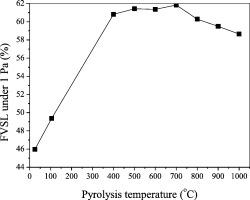Effect of pyrolysis temperature on lignite char properties and slurrying ability
Abstract
This work investigates the influence of different pyrolysis temperatures in lignite char properties and slurrying ability. Baorixile lignite was pyrolyzed under nitrogen atmosphere from low to high temperatures. The pyrolyzed chars were then used in preparing lignite char–water slurry fuels. The apparent viscosities and rheological behaviors of different slurries were obtained by using a rotating viscometer. Pyrolysis can effectively improve lignite char–water slurry concentration, and the influence of such mechanism can be determined by analyzing oxygen-containing functional groups and pore structures. Result suggests that pyrolysis not only removes the moisture content but also causes an apparent increase in lignite coal rank. Pyrolysis also evidently reduces the number of oxygen-containing functional groups and the hydrophilicity of lignite char, consequently improving slurry concentration but decreasing slurry static stability. The pore structure of the lignite char changes significantly after pyrolysis. With increasing pyrolysis temperature, average pore diameter initially decreases and eventually increases, whereas specific surface area and pore volume exhibit an opposite trend. Experimental results reveal that the slurry concentration of lignite char does not increase monotonically with the increase of pyrolysis temperature and 600 °C–800 °C is the most suitable pyrolysis temperature range for lignite slurrying ability improvement.


 求助内容:
求助内容: 应助结果提醒方式:
应助结果提醒方式:


